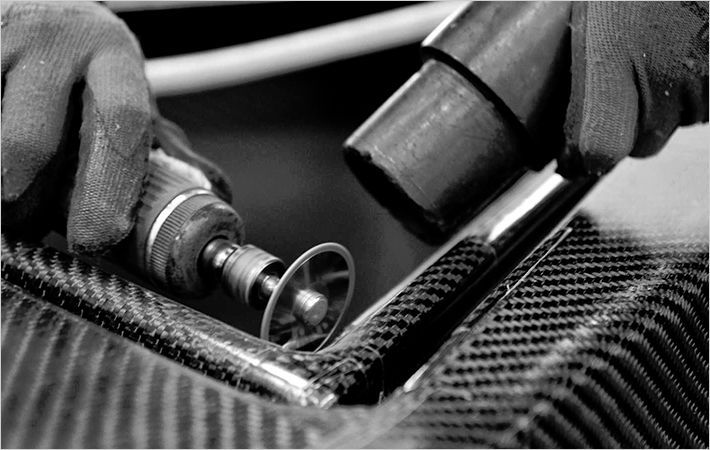As part of the research project "Absorber systems for the laser welding of textiles", scientists at the Hohenstein Institute (Bönnigheim) and the DWI Leibnitz Institute for Interactive Materials (Aachen) have developed new absorber systems for laser welding technical textiles in the infrared spectrum. The researchers have already used them to weld all kinds of different textile materials.
As part of the research project "Absorber systems for the laser welding of textiles", scientists at the Hohenstein Institute (Bönnigheim) and the DWI #
With the results of their research, the scientists have overcome one of the main challenges of laser welding: only a few textiles absorb laser radiation in the near infrared light spectrum and are therefore intrinsically suitable for laser welding.
As part of the research project "Absorber systems for the laser welding of textiles", scientists at the Hohenstein Institute (Bönnigheim) and the DWI #
To join other textiles successfully, you have to apply absorber materials to the proposed locations of the seams which absorb the near-infrared light, melt and so join themselves together. However, the absorbers that were commercially available until now caused discolouring around the seams on light-coloured materials and so their potential applications were limited.
As part of the research project "Absorber systems for the laser welding of textiles", scientists at the Hohenstein Institute (Bönnigheim) and the DWI #
The new absorbers, on the other hand, produce a technically high-quality bond between textile materials. The seams are resistant to liquids, mechanically strong, flexible and free of any discoloration. The way is therefore open for laser welding to be used as an alternative, highly effective and promising technology for bonding textiles.
As part of the research project "Absorber systems for the laser welding of textiles", scientists at the Hohenstein Institute (Bönnigheim) and the DWI #
Especially when it comes to producing technical and medical textiles, laser welding offers a number of advantages over traditional joining methods. The seams can be made watertight in a single process. This means that, in contrast to traditional seams, the subsequent "taping" of the seams, whereby special tapes are applied to seal the holes caused in the textile material by the stitching needles, is no longer necessary.
As part of the research project "Absorber systems for the laser welding of textiles", scientists at the Hohenstein Institute (Bönnigheim) and the DWI #
Seams created by laser welding are also flat, stretchy, flexible and proof against liquids and gases and they have impressively high tensile strength. Thanks to automatic in-line monitoring of the welding process, the quality of the joint is measured automatically. This means seam failures are avoided. The cost of checking seam quality is therefore minimised, which is especially important in the manufacture of high-quality products such as medical textiles, protective clothing, outdoor equipment and textiles used in vehicle manufacture and furniture-making.
As part of the research project "Absorber systems for the laser welding of textiles", scientists at the Hohenstein Institute (Bönnigheim) and the DWI #
Hohenstein

